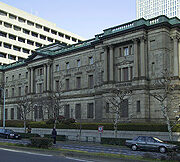Migration matters: the race to ensure a future supply of workers in Asia

The Bank of Japan’s new monetary policy framework: Less than meets the eye

Calming volatile international capital flows

Internationalization of emerging market currencies: A way forward
During the 2008 financial crisis, Asia experienced exchange rate volatility and liquidity shortages of the key currency—the US dollar—that severely affected trade within the Asia-Pacific Economic Cooperation (APEC) region. The dollar is crucial to maintaining financial market stability at an appropriate liquidity level. While the dollar is expected to remain the key currency in the foreseeable future, the crisis has led to a rethinking of the global economy’s over-reliance on the dollar and its capital and financial markets, and the need to enhance the role of emerging currencies and their markets.
While it will take time for emerging market currencies to become significant reserve currencies, their growing importance in the settlement of cross-border trade and investment can no longer be ignored. Read more.


Search
Subscribe / Connect to Asia Pathways
Subjects
- Agriculture and natural resources
- Blog
- Capacity development
- Climate change
- Economics
- Education
- Energy
- Environment
- Finance sector development
- Gender
- Governance and public sector management
- Health
- Industry and trade
- Information and Communications Technology
- Infrastructure
- Miscellaneous
- Population
- Poverty
- Private sector development
- Regional cooperation and integration
- Sanitation
- Social development and protection
- Transport
- Uncategorized
- Urban development
- Video Blog
- Water
Recent Posts
- Artificial intelligence: A new driver for inclusive growth and development?
- Increasing trust in cross-border e-commerce and artificial intelligence
- Enhancing access to maternal and newborn healthcare in developing Asia
- Can electric vehicles lead the way to a sustainable future?
- Mitigating climate-related sovereign risk to accelerate action on the climate emergency




Recent Comments